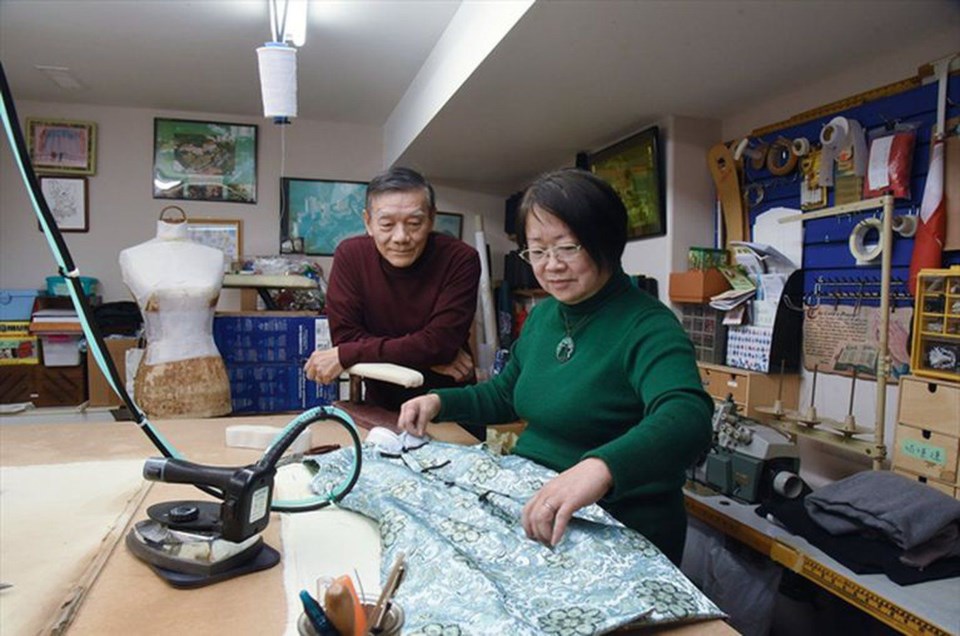In an ordinary basement workshop in Markham without even a signboard, two legendary tailors from Hong Kong have been working here for nearly 30 years, serving customers mostly from Markham, Richmond Hill and Toronto.
Tommy Sung and his wife, Connie Sung, have been dedicating their lives in handmade cheongsam. Before immigrating to Canada in 1996, they owned a well-established business called Repulse Bay Tailors in a wealthy suburb in Hong Kong.
Cheongsam, also known as the qipao, is a type of traditional Chinese clothing that has to be tailor-made. It was developed in the 1920s and became fashionable in cities open to foreign trade like Shanghai and Hong Kong.
“We used to make clothes for wealthy, upper-class people back in Hong Kong,” says Connie.
Despite full mental preparation, Tommy and Connie struggled to make a living in the first days of landing in Canada because no one here recognized their skills.
They started looking for jobs through the newspaper and ended up working in garment factories. They worked their finger to the bone each day, but the money they brought home wasn’t enough for food, Connie recalls. “Later, we gradually accumulated some contacts by helping people modify clothes and finally decided to go back to our old job: tailor-made cheongsam.”
Raised in a three-generation tailoring family, Tommy learned how to sew clothes by hand from his father at an early age. However, Tommy is a little negative about this family-passed craft that he has been doing all his life, because he thinks that the era of cheongsam is gone forever, and now it’s just a hobby instead of a source of income.
It usually takes the couple two weeks to two months to customize a cheongsam, with at least two fittings in between before it is finally presented to the client. From measuring to cutting and trimming to buttoning, “the whole process is cumbersome and time-consuming, so it's expensive,” Tommy says frankly. “The market demand is decreasing with fewer customers, who want to go into this business if it can't support their families.”
Connie also believes that insisting on sewing cheongsam stitch by stitch requires a passionate heart and a strong motivation of cultural inheritance, otherwise it will be difficult to persevere.
“If we were 20 years younger,” Connie imagines, “we might not be satisfied with this small family workshop; I would set up a street shop, introduce technology and machinery, increase production and only retain a few cultural elements, which probably would bring new vitality to this old craft. But now, we don't have the energy.”
In 2016, Tommy and Connie started to consider retirement and thought about finding a successor to their business, but it’s not easy to pass it on as even their two sons are not interested in it.
If someone comes to apprentice, Tommy said that he would definitely teach him or her everything without reservation as cheongsam carries Chinese culture and the dignified dress reflects Chinese ethnic roots.
When asked if it would be a shame if the craft was lost, Tommy said yes and no. Although he doesn’t want to be the last generation of tailors, he understands that many industries have been impacted by mechanization.
Scarlett Liu is a federally funded Local Journalism Initiative reporter at Economist & Sun



